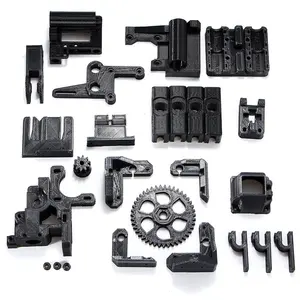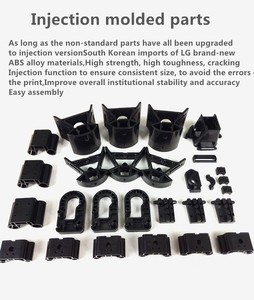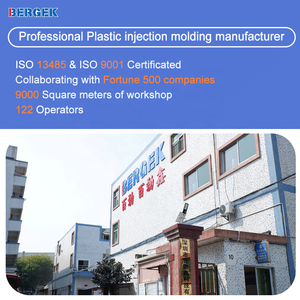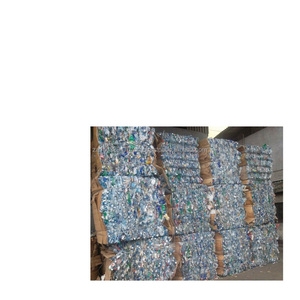
All categories
Featured selections
Trade Assurance
Buyer Central
Help Center
Get the app
Become a supplier

(2366 products available)













































Mixed rigid plastics come in various types with each variant finding wide applications in diverse fields. Here is a brief overview of the type:
Often used in packaging, PET is a rigid plastic highly valued for its strength and recyclability. Hence, it is frequently used in bottles, containers, and packaging materials. Due to its clarity and ability to resist moisture, it is a popular choice in the beverage industry.
Valued for its rigidity and chemical resistance, HDPE is used in manufacturing containers, pipes, and plastic furniture. Besides its dense molecular structure, which gives it durability, this plastic is commonly used in outdoor applications because of its ability to withstand UV exposure.
There are two forms of rigid PVC, unplasticized PVC and plasticized PVC. While UPVC is used in construction, such as pipes and windows, due to its strength and weather resistance. On the other hand, plasticized PVC is softer and is used in credit cards. This plastic is valued across multiple industries due to its versatility and affordability.
Polypropylene is popular for its balance of rigidity and flexibility. This makes it ideal for a wide range of applications. Its resistance to chemical solvents and heat recommends it for use in containers, automotive parts, and industrial applications. Further, this plastic is increasingly being recycled, contributing to sustainable practices.
Conventional polystyrene PS is a rigid plastic. Normally, it is found in foam and solid form. Solid polystyrene, which is commonly used in products like housewares, and toys, is valued for its ease of fabrication. On the other hand, expanded polystyrene (EPS) is widely used in packaging and insulation due to its lightweight and cushioning properties.
Mixed rigid plastic materials come with distinct features that enable them to perform differently. Here is a rundown of the features:
Typically, mixed rigid plastics are hard-wearing and long-lasting. This makes them ideal for creating products that are consistently exposed to stress and environmental factors. Further, their resistanc to water, chemicals, and UV radiation contributes to the longevity of these products.
Normally, mixed rigid plastics are lighter. Therefore, their utilization leads to the production of lighter products. As a result, this makes transportation more efficient without compromising on the strength of the products. This feature contributes to the preference of these plastics in packaging and automotive industries where weight is a crucial factor.
Definitely, one of the main advantages of mixed rigid plastics is their affordability. In addition, they require less expenses when manufacturing this plastic compared to metal or glass. This is where they find wide application in industries such as consumer electronics and construction. Therefore, their easy availability not only reduces the production costs but also ensures that these plastics are economically viable.
Ideally, mixed rigid plastics are highly flexible. Hence, they can be molded into various shapes to meet different industrial needs. Normally, they are used in diverse applications ranging from packaging, automotive parts, construction materials, and electronic housings. Therefore, their adaptability makes them a useful resource in multiple settings.
Commonly, mixed rigid plastics can be manufactured to give them a glossy or matte surface finish. This enhances their visual appeal to a great extent. In addition, these plastics are often used in consumer products like electronic devices, where the look and feel have a significant impact on customer satisfaction and branding.
Mixed rigid plastics have a myriad of divergent applications across countless industries. Here is an outline of the usages of this product:
Usually, mixed rigid plastics are widely used in packaging materials. For instance, Polyethylene Terephthalate (PET) is used for bottling drinks where it gives a non-breakable and lightweight alternative to glass. On the other hand, High-Density Polyethylene (HDPE) is found in containers and lids due to its strength and moisture barrier properties. These plastics are critical to food packaging as well since they extend shelf life and keep products safe.
Mixed rigid plastics are manufactured with the sturdy creation of a variety of automotive parts. Normally, polypropylene is used for manufacturing bumpers, dashboards, and interior panels due to its toughness and chemical resistance. In addition, these materials reduce the overall weight of vehicles. Thus improving fuel efficiency without sacrificing safety. Additionally, the usage of these plastics contributes to corrosion resistance. This aids in the long-term durability of the exposed components to the elements and adverse conditions.
Consumer electronics commonly utilize mixed rigid plastics as they provide a balance between durability and lightweightness. For example, casings for mobile phones, laptops, and other devices are designed using these materials to protect internal components while offering a sleek appearance. Stated differently, rigid plastics are delineated to accommodate diverse environmental factors like heat and humidity. This makes them suitable for use in devices that generate heat.
Often referred to as architectural rigid foams, mixed rigid plastics have expanded usage in the construction industry. Ideally, these plastics are incorporated into piping systems where polyvinyl chloride (PVC) pipes are favored for their durability and easy installation. Thus providing a reliable alternative to traditional metal pipes in plumbing and electrical installations. On a different note, polycarbonate sheets are used for windows and skylights because of their impact resistance and clarity.
Mixed rigid plastics are regularly used to make medical equipment and devices. Usually, these materials can be easily sterilized. This makes them ideal for surgical instruments, containers, and prosthetics. Standardly, the lightweight and strong nature of these plastics ensures that medical devices are easy to handle and transport while retaining the needed strength for effective functioning.
When purchasing mixed rigid plastics for resale in the market, there are a couple of factors as a buyer should consider. Here are the key factors:
Mixed rigid plastics comprise variegated types of plastics. Each type comes with unique properties. For instance, polypropylene (PP) is slightly flexible and ideal for items that require some give, like containers with lids. At the same time, polyvinyl chloride (PVC) has high tensile strength. It is often used in more structural applications such as piping. Therefore, buyers should first ensure they understand the ideal type of plastic for various applications before choosing this product.
Buyers should also consider the typical applications of mixed rigid plastics before purchasing. More often than not, polyethylene terephthalate (PET) is ideal for packaging due to its clarity and strength. On the other hand, polyvinyl chloride (PVC) is suited for construction projects. This is due to its durability and moisture resistance. As a result, buyers should purchase this product depending on the application their customers are likely to use.
Buyers should also consider the compatibility of mixed rigid plastics with other materials when purchasing them. Ideally, plastic products are manufactured to be used with other materials such as metal fasteners and adhesives. To achieve the best results, buyers should purchase plastics that are compatible with the products their customers might use. For instance, resistant to solvents and chemicals, and easy to bond to.
Buyers should also consider the environmental conditions where mixed rigid plastic will be used before purchasing. Normally, exposure to UV rays will be inevitable for plastics used outdoors. This necessitates UV stabilization to prevent them from degrading. Additionally, plastics used in high-temperature environments should be resistant to heat. This will be applicable in construction and automotive projects.
Yes, a mixed rigid plastic can be recycled. Usually, their recyclability level totally depends on the specific type of plastic. For instance, polypropylene (PP) and polyethylene terephthalate (PET) are usually easy to recycle. This is because they are widely accepted in recycling programs. Nevertheless, the recycling process for mixed rigid plastics is normally more complex than that of other homogeneous plastics. However, there are emerging technologies that are often developed to improve the efficiency and effectiveness of this process.
Typically, the sustainability of mixed rigid plastics has improved in the last couple of years due to the increasing level of plastic waste and pollution. Therefore, the growing concern has resulted in the development of new initiatives and technologies. These facilitate the recycling of rigid plastic and the creation of bio-based alternatives. Nonetheless, non-renewable resource consumption and potential pollution are usually the the cons of these plastics.
No, even though mixed rigid plastics offer versatility and durability in construction, they are not recommended as a long-term solution. Usually, these plastics succumb to wear and tear after a given period. To ensure project owners get a durable structure, builders should use metals and other materials that offer structural integrity as a conclusive giveaway.
Yes, there are a number of amendments that are made to mixed rigid plastics to improve their compatibility with other materials. Normally, surface treatments like plasma treatment and corona discharge are used to enhance adhesion. Furthermore, the development of hybrid materials integrates mixed rigid plastics with other substances. This improves their performance for particular applications.